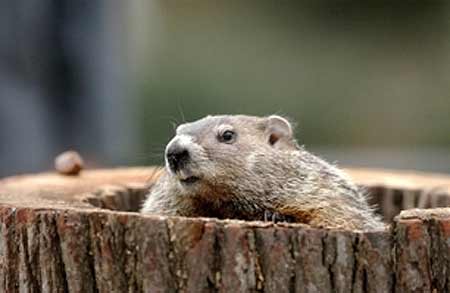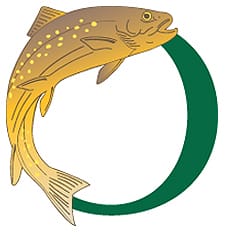GroundHog Hunting
A “Woodchucks” Guide To Groundhogs


Vermont –-(Ammoland.com)- For one day of the year they are the country’s most celebrated animal.
For the other 364 days most consider them a pest. They wreak havoc on an unprotected gardens and burrow underneath pastures creating tunnels that can collapse causing harm to cattle and horses. They are groundhogs.
Depending where you are in the country you might know them by a different name. In the East “woodchuck” is common. Some call them prairie dogs or gophers, but those are more western terms. The truth is gophers and groundhogs, while related, are different animals. Gophers only get up to 3 pounds while groundhogs can reach ten. Also, prairie dogs live in big colonies (thus those hunting videos where guys shoot hundreds of them a day) and groundhogs live in colonies of 4 –6 animals.
Some people also call them whistle pigs, but this is an older expression. It derives from a whistle-like sound the animals will emit when cornered. For the record, they are also known to swim and climb trees to escape danger.
Groundhog Day
Punxsutawney, Pennsylvania likes to take credit for the inception of Groundhog Day, but its roots go back further. It was a German tradition long before the early settlers of the small American town made it popular. If anything, Punxsutawney deserves credit for the holiday’s modern adaptation.
Groundhog Day is based on the European tradition of Candlemas Day. It falls on the mid-point between the winter and spring equinoxes. German folklore states that if the sun comes out on Candlemas, the hedgehog (or badger) will see its shadow and six more weeks of winter will follow. When German settlers came to Pennsylvania they continued this tradition, using groundhogs instead of hedgehogs to predict the weather.
Hunting Groundhogs
While the fat groundhog pictured on television the morning of February 2 might look cute, it is important to remember these animals are a very serious nuisance to farmers. While hunting them in the East is not as popular as it once was, most farmers welcome those who want to pursue the little beasts on their property. If you go out though, don’t expect a day full of shooting, the little critters are more difficult to harvest than people give them credit for.
A few tips include:
- Flies around a hole indicates it is active.
- Morning and late afternoon are the best times to hunt them. A groundhog’s den is 15 – 25 degrees cooler than the surface, meaning they will settle in them during the heat of mid-day.
- If you jump one and it runs into its hole keep an eye on the cavern entrance. Chances are that within 15 minutes (usually sooner) it will poke its head out to see what startled it and if the danger is still close at hand.
- If you are stalking a groundhog and it turns to look at you freeze. Most of the time it is the movement that scares them and they will go back to eating in 10 – 15 seconds.
- Groundhogs live to eat. They are vegetarians, and if they have a choice, will often eat alfalfa over other types of grasses.
Why Hunt Groundhogs?
- As we stated, groundhogs are a nuisance animal. Farmers and horse owners know this, and if you have ever tried to grow a garden where one is present than you understand this fact.
- Groundhogs are also edible. While it may sound unappetizing, they are vegetarians and their meat is highly prized in some circles – not to mention it doesn’t get any more organic. Most chef’s advise that you should roast them like you would roast beef. The younger, small ones are preferred table fare.
- The small tail of a groundhog is prized among fly tiers. Its thickness and texture is somewhat unique, and is used in the production of a handful of different types of flies.
About:
Each month Outdoors Magazine shines its spotlight on different areas of the outdoors world. Features and sub-features are multiple page spreads written by select experts in their fields. In addition to features and sub-features, each month Outdoors Magazine has over 40 columns written by real guides, industry experts, and the best in their fields. Our staff are die-hards who take the time out of their lives hunting and fishing to write. For more information, sponsorship opportunities, and expanded article descriptions, visit www.outdoorsmagazine.net.
